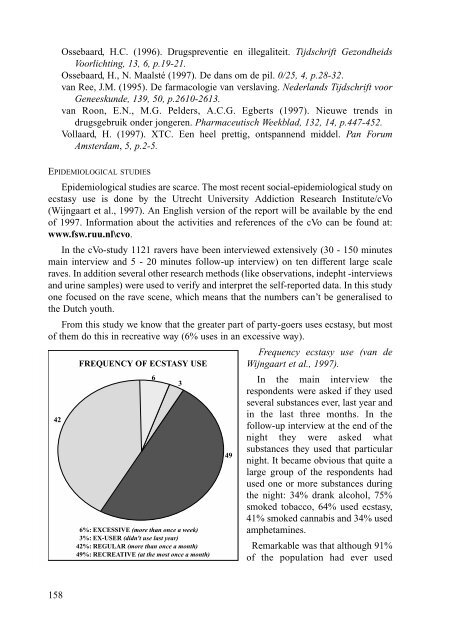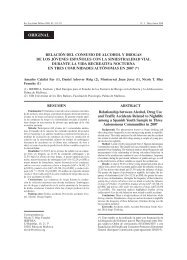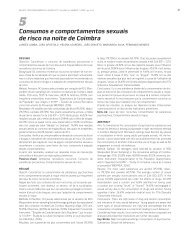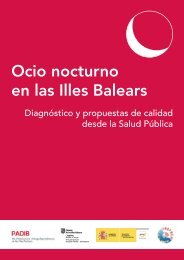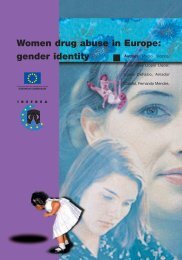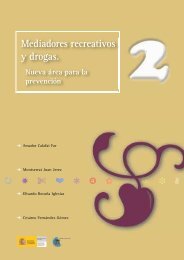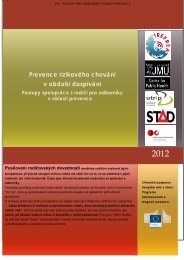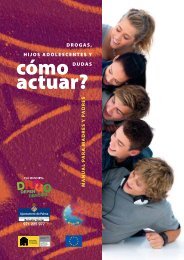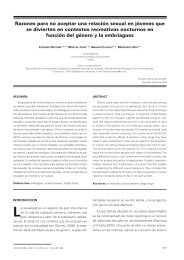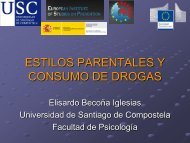Characteristics and social representation of ecstasy in Europe - Irefrea
Characteristics and social representation of ecstasy in Europe - Irefrea
Characteristics and social representation of ecstasy in Europe - Irefrea
You also want an ePaper? Increase the reach of your titles
YUMPU automatically turns print PDFs into web optimized ePapers that Google loves.
Ossebaard, H.C. (1996). Drugspreventie en illegaliteit. Tijdschrift GezondheidsVoorlicht<strong>in</strong>g, 13, 6, p.19-21.Ossebaard, H., N. Maalsté (1997). De dans om de pil. 0/25, 4, p.28-32.van Ree, J.M. (1995). De farmacologie van verslav<strong>in</strong>g. Nederl<strong>and</strong>s Tijdschrift voorGeneeskunde, 139, 50, p.2610-2613.van Roon, E.N., M.G. Pelders, A.C.G. Egberts (1997). Nieuwe trends <strong>in</strong>drugsgebruik onder jongeren. Pharmaceutisch Weekblad, 132, 14, p.447-452.Vollaard, H. (1997). XTC. Een heel prettig, ontspannend middel. Pan ForumAmsterdam, 5, p.2-5.EPIDEMIOLOGICAL STUDIESEpidemiological studies are scarce. The most recent <strong>social</strong>-epidemiological study on<strong>ecstasy</strong> use is done by the Utrecht University Addiction Research Institute/cVo(Wijngaart et al., 1997). An English version <strong>of</strong> the report will be available by the end<strong>of</strong> 1997. Information about the activities <strong>and</strong> references <strong>of</strong> the cVo can be found at:www.fsw.ruu.nl\cvo.In the cVo-study 1121 ravers have been <strong>in</strong>terviewed extensively (30 - 150 m<strong>in</strong>utesma<strong>in</strong> <strong>in</strong>terview <strong>and</strong> 5 - 20 m<strong>in</strong>utes follow-up <strong>in</strong>terview) on ten different large scaleraves. In addition several other research methods (like observations, <strong>in</strong>depht -<strong>in</strong>terviews<strong>and</strong> ur<strong>in</strong>e samples) were used to verify <strong>and</strong> <strong>in</strong>terpret the self-reported data. In this studyone focused on the rave scene, which means that the numbers can’t be generalised tothe Dutch youth.From this study we know that the greater part <strong>of</strong> party-goers uses <strong>ecstasy</strong>, but most<strong>of</strong> them do this <strong>in</strong> recreative way (6% uses <strong>in</strong> an excessive way).Frequency <strong>ecstasy</strong> use (van deFREQUENCY OF ECSTASY USE Wijngaart et al., 1997).4206%: EXCESSIVE (more than once a week)03%: EX-USER (didn't use last year)42%: REGULAR (more than once a month)49%: RECREATIVE (at the most once a month)6349In the ma<strong>in</strong> <strong>in</strong>terview therespondents were asked if they usedseveral substances ever, last year <strong>and</strong><strong>in</strong> the last three months. In thefollow-up <strong>in</strong>terview at the end <strong>of</strong> thenight they were asked whatsubstances they used that particularnight. It became obvious that quite alarge group <strong>of</strong> the respondents hadused one or more substances dur<strong>in</strong>gthe night: 34% drank alcohol, 75%smoked tobacco, 64% used <strong>ecstasy</strong>,41% smoked cannabis <strong>and</strong> 34% usedamphetam<strong>in</strong>es.Remarkable was that although 91%<strong>of</strong> the population had ever used158


